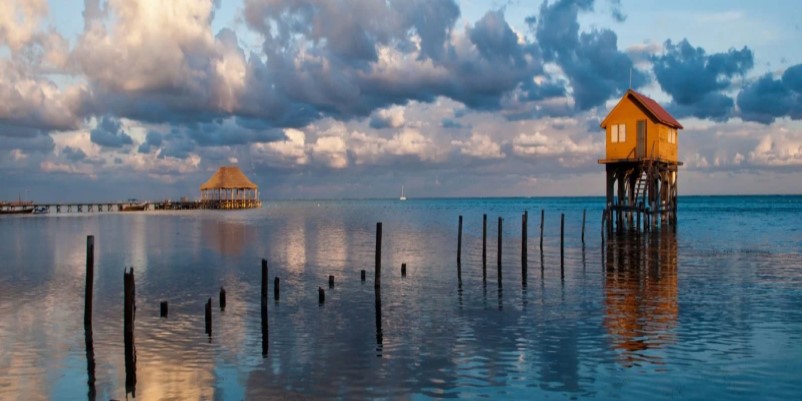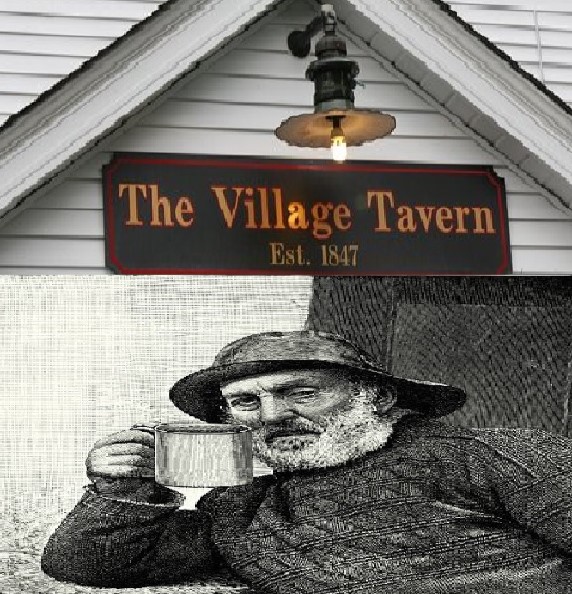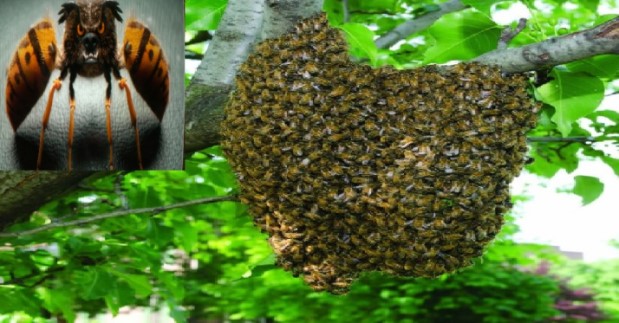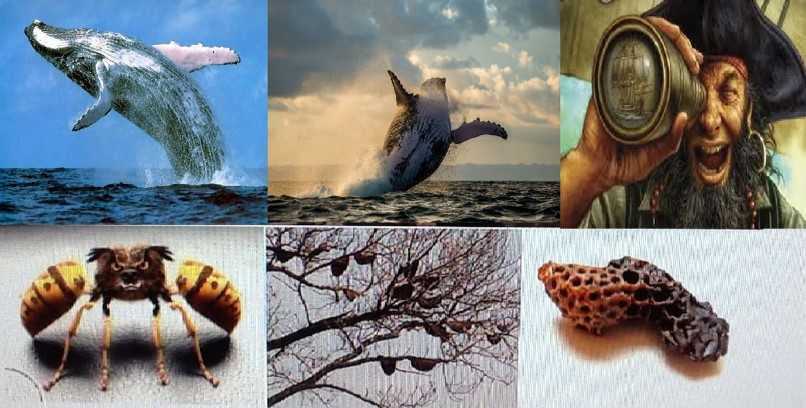PREFACE.
Some of my stories are rather spicy. I call them that because they reveal the truth behind official accounts of events, thereby casting doubt on them. I enjoy reading the fantasies of people who call themselves ‘historians’, and I am grateful that they inspire me.
The story I am going to tell you is based on the facts recorded by 17-th century naturalist Alexander Exquemelin, who spent many years among the pirates of the Caribbean. A physician by trade, he also served as a surgeon and participated in Henry Morgan’s famous raid on the Spanish fort Panama.
During his time with the pirates, Exquemelin observed the region’s flora and fauna, as well as the habits of its inhabitants. Upon returning to Europe, he wrote a book about everything he had seen. This book became a sensation, inspiring Daniel Defoe and Robert Louis Stevenson to write some of their most famous works. It remains an important source of information for writers today.
My second source of information is my own observations, which I have gathered over many years of leading an adventurous life at sea. After retiring, I live on the Caribbean coast for many years. My other sources are family lore and tales from people whose ancestors were pirates in these waters. This salty tale includes the account of one such eyewitness, a fisherman and islander who witnessed many events. Welcome to the adventure!
***
AN ISLAND OFF A CORAL REEF.

I love geography! It’s always surprising and unpredictable, driving me mad and making my heart beat faster. If it were a woman, I’d marry it! A boring woman is not my woman.
I once escaped to the Caribbean to get away from the hustle and bustle of Los Angeles. When my plane landed in this tiny country, I rented a jeep and set out to explore its hidden corners. I’ll tell you all about it next time — trust me, they exist! For now, though, I’ll tell you about my adventure on Ambergris Caye island.
The hour-long speedboat journey to the island immersed me immediately in a world of holidaymakers. The small town’s sandy beach was packed with tourists. Having come here to experience the freedom of being a slacker, they were exhausted from their hard work in bustling cities. Like puppies with their collars off, jumping, rolling in the grass and squealing with joy, the tourists were free. Driven mad by tropical aromas, a warm azure sea and rhythmic Caribbean music, they drank, danced and partied all night long. The younger ones went snorkeling or diving in the morning. The rest either lazed in bed or tried to burn off belly fat by writhing on the hot beach sand. In the evening, it was more of the same. The tourists drank and partied as if tomorrow were their last day on earth. Having undermined their health with this insane freedom, they returned dutifully to their everyday lives, where a collar and kennel awaited them.
“Just another show,” I grinned, downing my rum punch. After all, I was no different, spending my days in drunken idleness.
On Saturday, it was cloudy and rainy, and the sea was grey. I was lying in a hammock, drinking lime tea and flicking through tourist brochures. There are always plenty of these in hotel rooms. Suddenly, I came across a page that caught my attention. The authors of the brochure were attempting to explain the origin of the name Ambergris Island, stating that whales inhabited the local waters and that pirates were whalers. They also traded with French perfumers, selling them a by-product of whaling called ‘ambergris’, after which the island was named. That made me laugh. Here’s a paragraph from the brochure:
“…The story of how Ambergris Caye got its name is fascinating and somewhat mysterious. Spanish maps from the mid-1600s referred to the area as the “Costa de Ambra”. Literally, “ambergris” means an amber-grey substance that is a by-product of sperm whales. But “amber” has nothing to do with whales and is the fossilized, hardened resin of a pine tree growing on the Baltic coast. So what did the first European seafarers have in mind when they named the island? It turns out that the eponymous “ambergris”, associated with the whales and floating in waters around our island, was the dubious subject in question.
A mysterious substance with rumored mystical properties and hotly debated origins, no one knew where it came from in the pre-scientific era – the ambergris is a fragrant, volatile organic compound of a dull grey marbled color. Highly prized in perfumery before the advent of modern synthetics, ambergris was a key ingredient to preserve oriental fragrances and in high demand in Parisian perfumeries. The best part, however, is where ambergris comes from. Perhaps to the disappointment of those who once championed its mystical properties, we now know that ambergris is a secretion produced in the intestines of sperm whales. It’s often (inaccurately) referred to as ‘whale vomit’. Nice, eh? Incidentally, it’s thought that Ambergris Caye owes its name in no small part to the pirates who hid here in large numbers in the 1600s. These pirates are said to have cashed in on the natural bounty that was washed by the sea on the beaches of Ambergris Caye by selling ambergris to the perfume merchants of Europe…”.
Having emphasized my interest in these things, I decided to leaf through the other brochures. I discovered something even funnier:
‘Ambergris Caye is the largest of Belize’s two hundred islands. The island got its name from the large pieces of ambergris that used to wash ashore regularly. In ancient times, the island was inhabited by Mayan tribes. They dug a narrow channel along the north coast to create a trade route from Chetumal Bay to the Caribbean. After the Mayans came whalers, pirates and fishermen…’
Reading this made me smile. Of course, I realized that it was just a travel brochure and that its authors were not historians. They were trying to sell their services to potential customers. OK, let’s assume that the brochure’s authors are uninformed. But didn’t they copied the above information from official sources? They simply repeated the fantasies of people who call themselves ‘historians’. A little lie can have big consequences. A politician’s big lie begins with a historian’s lie. When politicians lie, the whole nation lives in lies.
***

SO WHAT IS AMBERGRIS?
I am quite familiar with the region’s colonial history. I have studied it in the archives, where information about Columbus’s discoveries and the Spanish colonizers is collected. I also know about it from pirates’ diaries rather than Hollywood pulp fiction. I also have first-hand experience of whaling. In the 1970s, I was a member on a nine-month expedition to hunt whales around the world, including in Antarctic waters. The experienced scientists on board of our whale hunter ship informed us that whales had never been sighted in the Caribbean. You can read more details below. Please do not confuse whales with whale sharks — they are two different creatures! Whales are mammals animals, whereas whale sharks are fish.
Now about the people. The island’s original inhabitants were Mayans, and it used to form part of the southernmost tip of the Yucatán Peninsula. The area is prone to hurricanes, and it was a hurricane that washed away the narrow isthmus that connected the peninsula to the mainland. In a similar way to neighboring Caye Caulker, the peninsula became an island. You can still see the effects of this today. Rather than digging a canal for shipping and trade, the Mayans capitalized on the hurricane’s work to protect themselves from their aggressive northern neighbors, who raided them. The Mayan name for the island was Sombale.
Back to whales. Whales can be divided into two main categories: toothed whales and baleen whales. The blue whale is the largest species in the latter group. It feeds on plankton by filtering large volumes of water through its baleen mouth. Toothed whales are catching giant squid at great depths. An example of this type of whale is the sperm whale. Giant squid are the sperm whale’s main food source. Giant squid have a beak for crushing coral and extracting larvae, much like a woodpecker does with wood. However, the beak is made of bone and cannot be digested by the sperm whale’s stomach. So, the stomach sends the beak into the appendix. Or the whale spews the clot back into the sea.
Centuries ago, the Vikings hunted whales in the North Atlantic. After dragging a killed sperm whale into the shallows, they cut off its flesh and ribs, leaving behind its intestines and an organ known as the ‘appendix’. The intestines emitted such a strong faecal odour that even the sharks were scared away. This residue remained on the shore for centuries, gradually hardening and turning a distinctive dirty grey-yellow colour. Europeans called this substance ‘ambergrease’, meaning ‘dirty amber’. However, this was not the amber that could be found on the sandy shores of the northern seas.
After being rinsed by seawater and warmed by the hot sun for hundreds of years, the hardened remains of the sperm whale’s stomach gave off a musky scent similar to that produced by humans going through puberty.
From the 17th to the 19th century, some European dandies wore ambergris to attract women with its scent. This inspired French perfumers to use it as a strong fixative in perfumes. It was used for a long time until a chemical substitute was developed in the 1970s, which significantly reduced the need to kill whales. Nevertheless, natural ambergris remains highly prized, and finding it on the beach could make someone very rich.
The first European explorers or pirates to set foot on Sombale Island found large quantities of a yellowish, muddy substance in the shallows off its coast. Resembling ambergris, a substance found on the shores of northern seas, they named it after the substance found inside sperm whales. They renamed the island Ambergris. This is an example of how Madame Geography can play tricks on people. When Christopher Columbus discovered the lands of the New World, he thought he had arrived in India. He called the inhabitants ‘Indians’, but he was mistaken. But the name stuck!
Local historians continue to mislead us by linking the name of the island to ambergris, a substance produced by sperm whales. However, this is just an assumption, and there is no proof. Read on to find out the truth. No assumptions, just facts.
***
LIFE AT SEA.

I was a professional seaman and navigator for many years, crossing the oceans on all kinds of vessels. I worked in the commercial fishing industry for many years, and I once embarked on a whaling expedition as a crew member on a whaling ship. This was in the 1970s, when hunting whales was legal. (PHOTO: Our base ship, whale hunters and me. I am standing on the deck of our whale hunter in Antarctic waters. Behind me are two harpooned sperm whales that we are towing to the base ship. The whales are held in chain lockers). It was a dangerous adventure and some of our friends lost their lives. The crew of our whale hunter ship included a group of scientists. They were studying the lives of these sea creatures using search equipment on board to locate whales at great depths. We hunted whales in the central Atlantic, off the coasts of Brazil and Argentina. Then we moved further south, reaching Antarctica, where we hunted for several months before winter set in. We followed the whales through ice and fogs, through Drake’s Passage into the Pacific Ocean and along the coasts of Chile, New Zealand and Australia. We then crossed the Indian Ocean, passing through the stormy forties latitudes, to reach the Cape of Good Hope.
The whales returned to the Central Atlantic and so did we, thus completing our circumnavigation of the globe. Our nine-month expedition provided a wealth of information about ocean life and its inhabitants. During those long months at sea we made observations and enjoyed interesting conversations over tea in the evenings. I learnt a lot about the life of these ocean giants. One of the main findings of our expedition was that whales prefer the open ocean waters, where they can move quickly and dive hundreds of meters in seconds. The sperm whales can dive particularly deep, to hunt for squid, and a substance in their blood called spermaceti has nothing to do with the substance that creates new life. It’s the substance that keeps the blood from boiling. Depending on how deep the whale dives, the substance makes the blood thicker. The spermaceti is a proven ingredient in cosmetics and an effective remedy for burns and cuts. Purified spermaceti oil is also used to treat stomach ailments.
Like big ships, sperm whales tend to avoid shallow waters. So my first question was about the connection between the island’s name and these whales. Ambergris Caye is surrounded by reefs and shoals, not the depths of the ocean. Another important factor is that there are no squids in the Caribbean sea, so there is no food for sperm whales there!
And I have a question for the historians: Why would sperm whales live in shallow waters where there is no food for them ? If those who invented the myth of whales and pirate whalers on Ambergris Caye had bothered to read scientific literature about these sea creatures, I don’t think they would have risked exposing their names to ridicule.
But one question remained in my mind: What was floating in the island’s waters that so many people had mistaken for the contents of a whale’s stomach? I had the feeling that Madame Geography was playing with us again here – I swear on an uneaten crocodile’s tail!
Then I remembered the advice of a professional sunken treasure hunter, who in his book recommended against wasting time searching the archives for old charts and manifestos of sunken ships. Instead, he suggested visiting a local tavern and listening to the stories of tipsy fishermen, who might know things that couldn’t be found in the archives.
Taking his advice, I set off in search of a fisherman. The locals told me to visit the fishing village two miles south. I walked the two miles in the rain until I came to a tavern that reeked of fried fish. There, I found my fisherman.
***

AMBER-GRIS OR AMBER-BEES…?
All the men in his family were fishermen. During the colonial wars, many of them became pirates. They plundered at sea under the protection of the local authorities, and when peace was declared, they continued to pirate at their own risk, making night raids along with daytime fishing. The Gulf of Honduras was an ideal area for pirates. On secluded islands they could hide from pursuers and stash their loot.
In small coves, pirates could wait out storms and hurricanes, repair their schooners, and to hunt down new prey. Many of these small islands, or cayes abounded with fish, turtles, wildlife, fruit and fresh water. They were in the path of Spanish ships carrying gold and silver from the colonies to Cuba. How many tragedies have occurred in these waters? How much gold, silver and precious stones lie on the seabed? Only the fish know. And fish can keep quiet.
Here, an old man scratched the bottle with his rough nail. I took his hint.
‘The natives were collecting a sticky, yellowish substance that they had found in the shallows for their own use while the pirates watched,‘ he continued, sipping his rum.
‘So, what do you think it was?‘ The old man chuckled.
‘I’m just listening,’ I replied, also sipping my rum.
‘In those days, our land was densely covered in forests,’ he continued, ‘Millions of wild bees inhabited them. They hung their honeycombs in the trees, out of reach of both humans and animals. From time to time, strong winds would break branches and tear down the nests, washing them out to sea. Coastal currents would then carry the nests to the shallows of our island. Our ancestors would collect these nests, which were still full of wax. Compresses made from honey wax heal wounds, while a mixture of boiled honey and herbs cures internal diseases. They also used the wax to make candles to light their dwellings. And the pirates quickly found another use for the wax,’ he grinned.
‘On our island, which was closest to the open sea, the pirates repaired their schooners. They soon discovered that adding honey wax to boiling shark oil produced an excellent tar that protected their ships from sea termites for longer. So, what happened next?’
He paused for a moment, then continued. ‘The Europeans liked our trees. They found that redwood sap made a strong dye for their textiles. They also liked the solid wood of our mahogany, which was ideal for shipbuilding. Soon, this huge demand marked the beginning of deforestation. The pays were high, so many pirates turned to logging. My great-grandfather worked with them, but not for long. ‘He preferred piracy,‘ the old man laughed.
‘Well, the massive deforestation hit the wild bees hard. When they lost the trees on which they hung their honeycombs, the bees flew away. The forest was gone, and so were the bees. No honeycombs were found on the sandbanks of our island anymore...’
With a sad smile, the old man finished his story and put down the empty bottle.
I listened to him, but one thought kept nagging at me: Somewhere I had read about these bees!

***
THE CLUE TO MADAME GEOGRAPHY’S JOKE.
My holiday was over. I flew back to Los Angeles, but the story continued to haunt me in my sleep. In my home library, I have rare books written by naturalists and pirates from that era. The next day, I turned the pages of these books, trying to find what I was looking for. Suddenly, I felt that the answer was close at hand. What I found was this:
‘The Ambergris Caye is the largest of islands in the waters of that region. On old Spanish maps from the sixteenth century, the island is named ‘Costa de Ambra’ or ‘Costa de Amba’.
In these two spellings of the name, one letter, or rather its absence, caught my attention. The missing ‘R’ completely changed the natural essence of the island!
‘Amba’ is the Spanish word for mangroves. Which are abundant on all the Caribbean islands. But ‘Ambra’ (or Ambra grisea) is an oily substance of a grey-yellowish color, a kind of hardened substance from the stomach of a sperm whale, its appendix. The appendix of a whales that were never here…!
I was searching for similar things in the books of other naturalists. None of them mentioned whales! Then I opened the book, one of the most trusted sources of information on Caribbean piracy. The author of the book, Alexander Oliver Exquemelin, was a Dutch surgeon who spent years with pirates and even participated in the pirate raids of the privateer Henry Morgan, the legendary leader of all Caribbean pirates and buccaneers. The surgeon visited Ambergris Caye with the crew of L’Olonnais, a bloodthirsty French pirate. As well as tales of pirate life, the surgeon Exquemelin was an inquisitive explorer and naturalist who described the flora and fauna of the area. His journals contain many comments on aboriginal life. Here are some extracts from his book:
1) …Our pirates had captured many canoes from the Indians of the island of Sombale, five leagues from the coast of Yucatan. On this island, there are great quantities of substance looked like ambergris, which locals collected in the shallows, especially when a storm blows from the mainland…
2) …In the lands surrounded by this sea, there are great quantities of redwood, which is used for dyeing…
3) …Pirates found a substance with which they could make the bottoms of their ships watertight. To make tar, they boiled the substance they found and diluted it with shark oil. This pitch is washed ashore in such quantities that the whole island was probably made of it. It is not the same as the marine pitch used in Europe, or a scum from the sea that naturalists call ‘bitumen’. In my opinion, it is bee wax, thrown into the sea by storms and rivers, washed ashore, and mixed with sand… In this clot, I found a large number of remains of bees, which hang their nests in trees, whence they are blown off by hurricane winds and the local rivers further carry this mass into the ocean, as mentioned above. There are large numbers of bees in this area and their honeycombs are blown down from the trees by hurricanes and carried out to sea. Some naturalists believe that water causes a separation in this honey, resulting in the formation of ambergris. This is easy to believe because when it is found, ambergris is still soft and smells of bee wax…”.
Here I closed the book and smiled in mind to my old fisherman: ‘…especially when a wind blows from the west…It was the wind from the forested mountains! Together we solved the mystery of Madame Geography. Now two people know the truth about the history of the name Ambergris Caye. An old fisherman and me. But, what about the whales? Oh, come on, they’ve got nothing to do with it…

© Copyright: Walter Maria. Certificate of publication No. 214061901183

I have read your article carefully and I agree with you very much. This has provided a great help for my thesis writing, and I will seriously improve it. However, I don’t know much about a certain place. Can you help me?
Thanks for sharing. I read many of your blog posts, cool, your blog is very good.
I’ve been using it to stay on top of my to-do list, and it’s awesome.